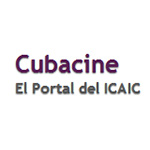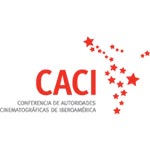Augusto Tamayo San Román nació el 5 de mayo de 1953, hijo del célebre literato Augusto Tamayo Vargas. Tamayo es arquitecto, literato, director y creador multifacético. Es Licenciado en Literatura y Lingüística Hispánicas, asimismo, tiene un postgrado en Realización Cinematográfica, gracias a una beca del Consejo Británico.
El cineasta ha dirigido siete largometrajes, ha participado en seis telenovelas, 35 documentales y más de 500 comerciales. Obtuvo la beca Fulbright, destinada a aquellas personas con excelentes antecedentes.
Con más de 30 años de trayectoria, Tamayo confiesa que "lo que más me apasiona es leer literatura y transformarla en un filme". Fue el creador de éxitos taquilleros como La fuga del Chacal, Anda, corre y vuela, o El bien esquivo (precandidata al Oscar). Este director se confiesa amante del Perú y de su historia: «Hacer cine peruano es contribuir a que exista una imagen del país en la pantalla grande sin necesidad de proclamarlo, es un nacionalismo auténtico, no de palabras». Su paso hacia el mundo audiovisual se dio por etapas. Empezó como estudiante de arquitectura, pero a medio camino descubrió otros intereses que lo llevaron hasta la literatura, carrera que terminó y en la cual es licenciado. Luego, estudió en la Escuela Nacional de Cine de Londres.
Su primer trabajo cinematográfico fue Cuentos inmorales, en 1978, película que sigue vigente hasta la actualidad y se proyecta en diversas filmotecas y en algunas universidades. El episodio de Tamayo San Román, Mercadotecnia o las desventuras de Mercurio, estaba basado en un guión original que contaba una crónica urbana en que predominaba la picaresca sobre el desencanto o la amargura presente en el episodio de Lombardi.
Luego desarrolló La fuga del Chacal, la cinta peruana más taquillera de la historia y que para él fue un encargo muy entretenido, pues combinó acción, aventura, intensidad y la satisfacción de llegar al público. El filme apostó por un cambio en el cine peruano que le permitiera hacer un cine de calidad, que se acercara a la fórmula del cine internacional. La atracción del espectador por los ambientes marginales de Lima se lograba, según el ensayista Ricardo Bedoya, "gracias al registro muy contrastado y vivo de espacios urbanos captados con una fotografía hiperrealista que buscaba contradecir el estilo de reportaje verista a la miseria, que es la imagen fílmica de Lima, a partir de las cintas del grupo Chaski".
Al hablar sobre el El bien esquivo, Tamayo confesó sus múltiples intenciones: “Me involucré personalmente, porque intenté recrear momentos trascendentales de nuestra historia, argumentos que tienen que ver con los peruanos, la identidad de ser mestizos, temas que me interesan y que a la vez son importantes para todos”.
Para Tamayo, quien también es productor publicitario, ser cineasta es su verdadera vocación. «Creo que acerté al elegir esta carrera», manifiesta, y asegura que siempre ha tratado de desarrollar un estilo cinematográfico propio. «Lo que más me apasiona, y ahora lo tengo clarísimo, son las etapas creativas del cine, el día de rodaje, salir a filmar, especialmente en largometrajes, pues creo que son actividades intensas y apasionantes. No hay nada que disfrute más».
Augusto Tamayo was born on May 5th, 1953, the son of the famous writer Augusto Tamayo Vargas. He is an architect, writer, director and multifaceted creator with more than 30 years of artistic career. He is also a graduate in Hispanic language and literature and did a post graduate study in film direction thanks to a grant of the British Council.
Tamayo has confessed that “my greatest passion is to read literary works and turn them into films.” He is the autor of box-office hits as La fuga del Chacal, Anda, corre y vuela, or El bien esquivo (pre-candidate to the Academy Awards). He declared himself as a lover of Peru and its history: «to make film in Peru is to contribute to the existence of a national image on the screen without doing statements; this is the authentic nationalism, the one without slogans».
His approach to the audiovisual was gradual; first he began architecture studies, but half-way through them, he discovered a different vocation that led him to literature, studies from which he finally graduated. Only after that, he studied at the London National Film School.
His first cinematic work was Mercadotecnia o las desventuras de Mercurio, one of the episodes of the feature film Cuentos inmorales (1978), a film that is still to date appreciated and showed in film archives and universities. His film episode was based on an original screenplay that told an urban chronicle, in which the picaresque surpassed the pessimism and bitterness of Lombardi´s episode in the same film.
After Cuentos Inmorales he developed the project of a feature of his own, La fuga del Chacal, which became the greatest box-office success of Peruvian cinema, and which resulted for the filmmaker himself a very enjoyable assignment, since it combined action, adventure, intensity and the satisfaction of reaching a wide audience. The film bet for a change in the Peruvian cinema, which allowed making quality films that followed the tendency of international cinema. According to the Peruvian scholar Ricardo Bedoya the audience attraction towards Lima´s poor environments was attained “by means of the contrasting and lively record of the urban spaces, using a hyper-realistic photography that tried to oppose the realistic reference to poverty that characterized the filmic image of Lima since the films of the Chaski Group.
In El bien esquivo, Tamayo revealed his multiple purposes: “I was personally involved in it, because I tried to reflect transcendental moments of our history, stories closely related to the Peruvian people, mixed race identity, subjects am I interested in and that, at the same time, are important for all.”
For Tamayo, who is also a publicity producer, be a filmmaker is a real vocation. «I think I was right when I chose this profession», he said and assures that Always has intended to develop a film style of his own. «The most passionate thing for me is, and now it is clear to me, the different creative stages of filming, the shooting days, to go out to film, especially in the case of features, that are so intense and passionate activities. There is anything that I enjoy more than that »
Tamayo has directed seven feature films, taken part in six soap operas, 35 documentaries and more than 500 commercials. He was the winner of a Fulbright scholarship, granted to people with a career of excellent results.
 “Nuestro objetivo final es nada menos que lograr la integración del cine latinoamericano.
Así de simple, y así de desmesurado”.
“Nuestro objetivo final es nada menos que lograr la integración del cine latinoamericano.
Así de simple, y así de desmesurado”.













